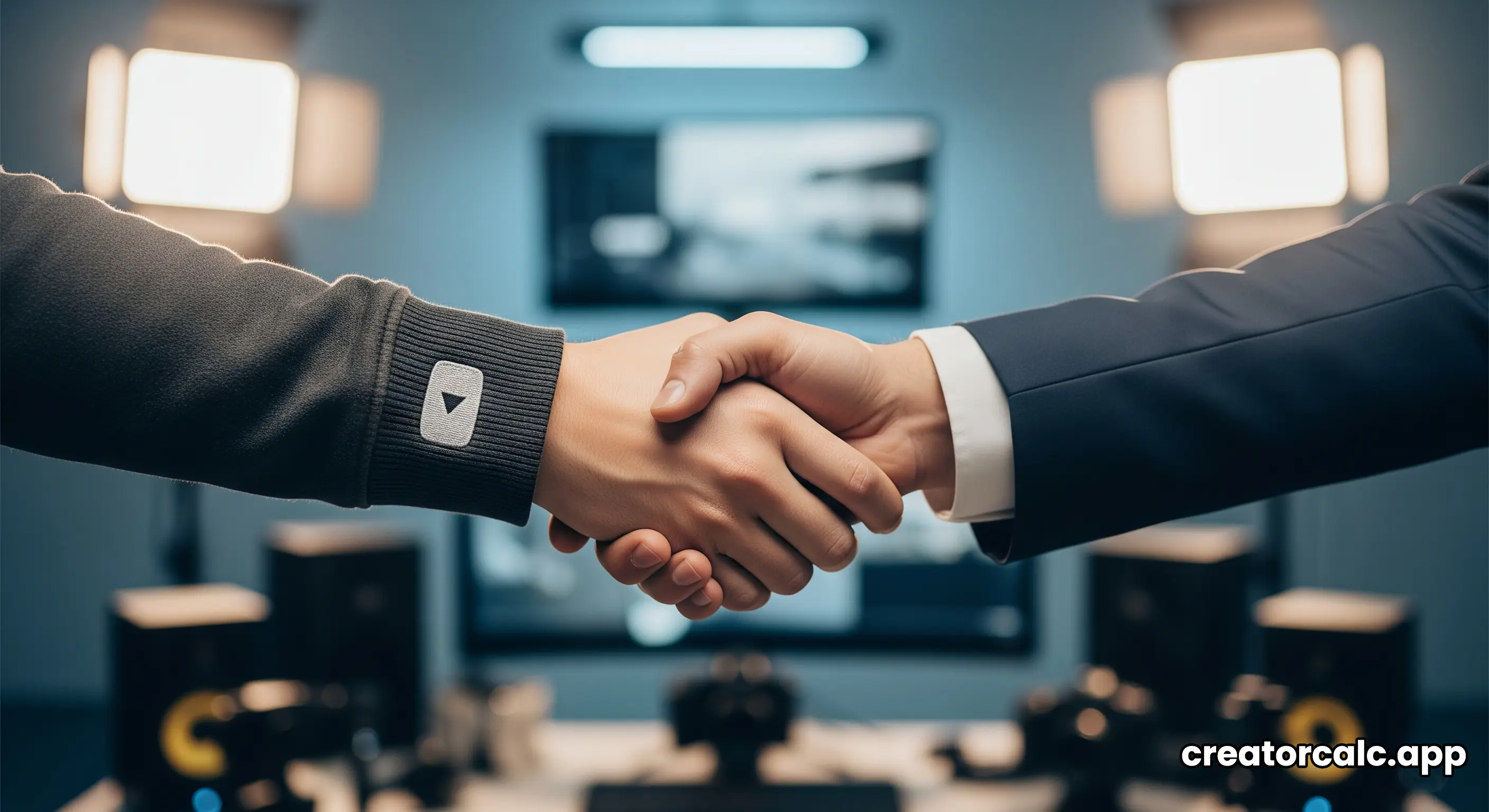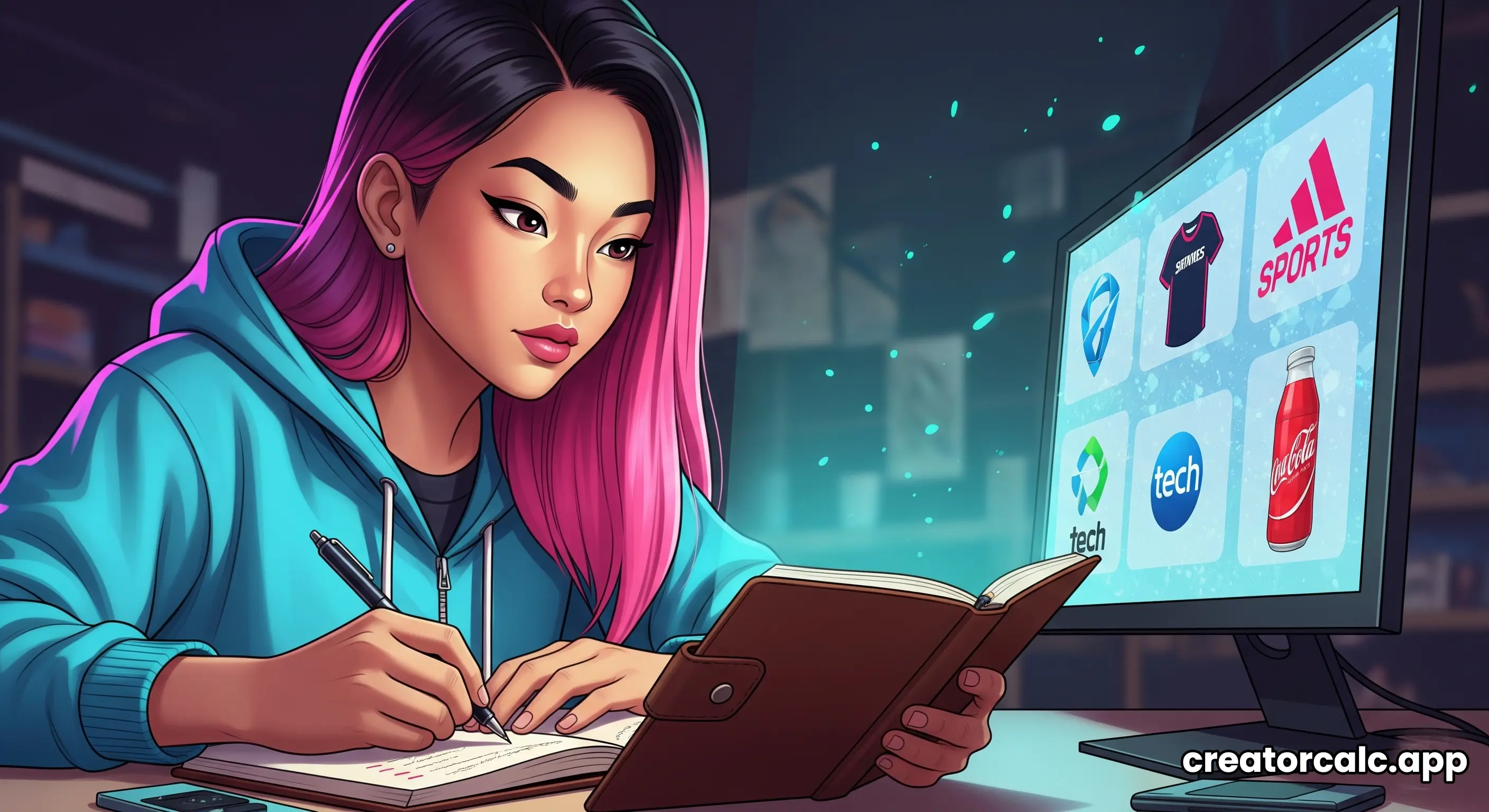For many YouTubers, a **YouTube sponsorship** is a major goal. AdSense provides a baseline income, but brand deals can be much more lucrative and help you build a professional career as a creator. Many people believe you need hundreds of thousands of subscribers to get sponsored. That's no longer true.
Brands are now very interested in working with "micro-influencers"—channels with smaller, but highly engaged and niche audiences. If you have a loyal community that trusts you, you can get sponsored. This guide will show you the step-by-step process to land your first brand deal, even if you're just starting out.

Step 1: Build a Professional Brand, Not Just a Channel
Before you even think about reaching out to brands, you need to make sure your channel looks professional. Brands want to partner with creators who take their work seriously.
- Have a Clear Niche: What is your channel about? Brands want to partner with channels that reach a specific audience. Be the "go-to" person for a specific topic.
- Professional Branding: Have a clean channel banner, a good profile picture, and consistent, high-quality thumbnails.
- Complete Your "About" Page: Your "About" page should clearly explain what your channel is about and who you are. Crucially, put a professional email address here for business inquiries.
Step 2: Create a Media Kit
A media kit is a digital resume for your YouTube channel. It's a one-page document (usually a PDF) that gives brands all the information they need to know about you. It makes you look professional and prepared.
What to Include in Your Media Kit:
- About You & Your Channel: A short bio and a description of your content niche.
- Audience Demographics: Go to YouTube Studio > Analytics > Audience. Include screenshots of your audience's age, gender, and top geographic locations (especially if you have a US audience).
- Key Statistics: Include your subscriber count, average views per video (in the last 30 days), and average watch time.
- Services You Offer: List what you can do (e.g., dedicated video, 60-second integration, social media posts).
- Contact Information: Your professional email address.
You can use a free tool like Canva to design a beautiful media kit.
Advertisement
Step 3: Find the Right Brands to Contact
Don't wait for brands to come to you. Be proactive. Make a list of companies that would be a perfect fit for your audience.
- Look at Your Own Life: What products or services do you already use and love? Authentic partnerships are the most successful.
- Watch Similar Channels: See which brands are sponsoring other creators in your niche.
- Think Small: Don't just target huge companies like Nike or Apple. Smaller, up-and-coming brands are often more willing to work with smaller creators.

Step 4: Write the Perfect Pitch Email
Once you have your list, it's time to reach out. Your email should be short, professional, and personalized.
A Simple Email Template:
Subject: YouTube Collaboration Idea: [Your Channel Name] x [Brand Name]
Hi [Contact Person's Name, if you can find it],
My name is [Your Name] and I run the YouTube channel [Your Channel Name], where I create content about [Your Niche] for [Your Target Audience].
I am a huge fan of [Brand Name] and I regularly use your [Specific Product]. I believe your product would be a perfect fit for my audience because [Reason why it's a good fit].
I've attached my media kit with more details about my channel and audience. I'd love to discuss a potential partnership to feature [Brand Name] in an upcoming video.
Thank you for your time and consideration.
Best regards,
[Your Name]
[Link to Your Channel]
Step 5: Know How Much to Charge
This is the tricky part. A common starting point is to use a CPM (Cost Per Mille) model, where you charge based on your average views. A typical sponsorship CPM ranges from $15 to $50. You can use our YouTube Sponsorship Calculator to get a good estimate for your channel.
Frequently Asked Questions (FAQs)
1. How many subscribers do I need to get a sponsorship?
There is no magic number. Some creators get their first deal with as few as 1,000-2,000 subscribers if they have a very engaged, niche audience. Brands care more about average views and engagement than just the subscriber count.
2. Do I have to say my video is sponsored?
Yes, absolutely. Both YouTube's policies and the FTC (Federal Trade Commission) in the US require you to clearly disclose that your video is sponsored. You can do this by checking the "Paid promotion" box when you upload your video and by mentioning it verbally in the video itself.
3. What if a brand wants to pay with free products instead of money?
This is common for very small channels. It can be a good way to start and build a relationship with a brand. However, as your channel grows, remember that your time and influence are valuable. Don't be afraid to ask for monetary payment for your work.